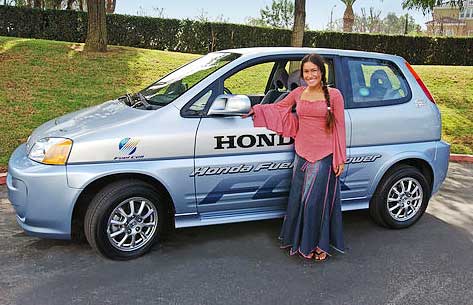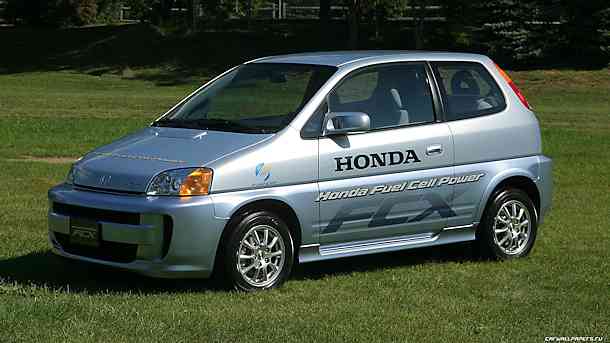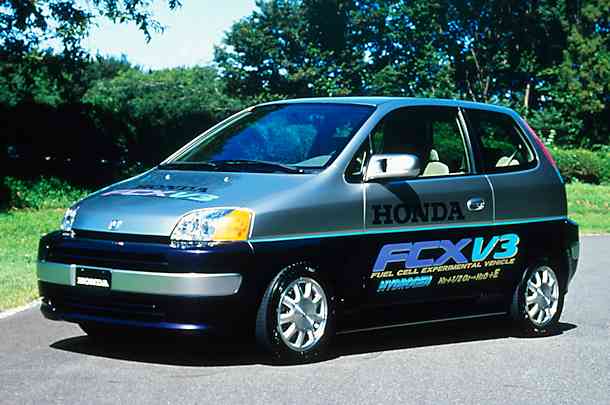The Honda FCX Hydrogen Fuel Cell Concept Car will most likely be dubbed the 3rd generation Honda FCX H2 car when it rolls off production lines in 2008. The newest Honda FCX Concept Car is more advanced than the current 2005 Honda FCX hydrogen car that is currently being used in fleet vehicles by different governmental agencies.
|
Honda president Takeo Fukui stated at the 2006 North American International Auto Show that the FCX concept car would be available for limited driving opportunities for the media as soon as the third quarter this year. |
 Actress Q’orianka Kilcher at 17-years-old become youngest Honda FCX customer |
One of the most innovative approaches for the FCX concept car is the high-efficiency vertical gas flow arrangement. The compact V Flow fuel cell platform allows hydrogen and oxygen to flow from top to bottom of the fuel cell stack. The advanced fuel cell stack also uses gravity to effectively manage the discharge of water, improving the performance in sub-zero weather, solving the cold-weather start up problem that has plagued other fuel cell vehicles, making them less than commercial grade. The newest Honda FCX is capable of starting in temperatures as cold as -30C.
The Honda FCX uses two lightweight fuel cell stacks with a combined output of 86 kw. Unlike earlier versions of the car, the newest Honda FCX uses a single 80 kw DC brushless electric motor, coupled with a transmission and drive shaft the power the vehicle. The Honda FCX is also a hybrid vehicle as well, using a bank of ultracapacitors hidden behind the rear passenger seat to supply addition power to the vehicle.

2005 Honda FCX
The ultracapacitors have lower internal resistance than a battery system, making the Honda FCX different than other typical hybrids. The ultracapacitors provide supplementary power to the fuel cell stack such as during acceleration when more oomph is needed. The ultracapacitors also assist with the startup of the vehicle and at other times when more energy is required by the vehicle.
Below the ultracapacitors, underneath the floorboard reside the two compressed hydrogen tanks at 5,000 psi each. The high pressure tanks are comprised of different layers of glass fiber, carbon fiber and aluminum for safety and corrosion resistance. The tanks combine for a 250 mile driving range.
The Honda FCX contains an auto idle stop system that shuts off the fuel cell when the vehicle is stopped. The electric system and air conditioning at this point will run off the ultracapacitors. Decelerating the FCX also recharges the ultracapacitors, storing energy at every possible moment.
Since one of the drawbacks for any new owner of a hydrogen car will be where to buy hydrogen gas for each fill up (until all the infrastructure is in place), Honda has come up with a home filling station. The Home Energy Station III will not only fill up your FCX concept car but also power your house as well. The Honda Home Energy Station is a third generation energy source built in partnership with Plug Power Inc.

1999 Honda FCX Prototype
The Home Energy Station III uses natural gas and gas reformation technology to extrude the hydrogen, then run it through its own fuel cells, generating up to 5 kilowatts of electrical power. It can even run your home appliance that slices and dices and makes Julian fries. The Home Energy Station III is approximately 30-percent smaller than the Home Energy Station II but with 25-percent more electrical output.